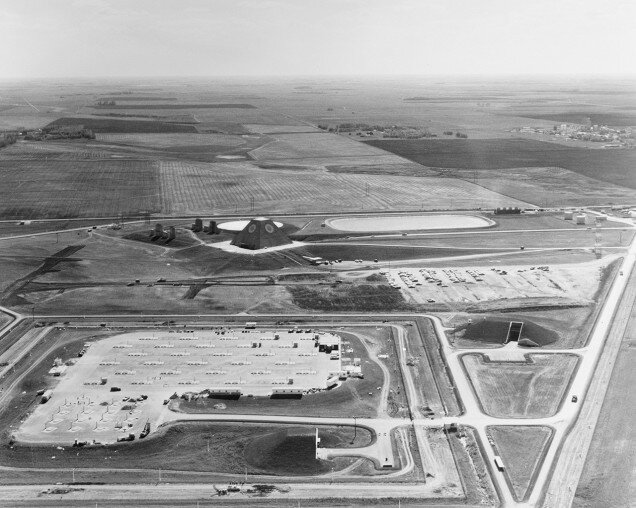The Largest Economic Cold War Casualty, Abandoned in the North Dakota Tundra
The Cold War’s total expenses rack up to around $5.5 Trillion, at a minimum. And that’s just on the American side. However, possibly the single most wasteful expense was the Stanley R. Mickelson Safeguard Military Complex. This $15 Billion missile defense system was defunded and shut down less than 24 hours after initial construction was completed. Source
Sim Chi Yin Source
How did the Cold War start?
Immediately after Nazi Germany surrendered in May of 1945, tensions escalated between the United States and The Soviet Union, who were tentative allies in the fight.
Then came August 6th, 1945. The United States dropped the world’s first atomic bomb on Hiroshima, killing upwards of 150,000 people. Of which, the Soviet Union was not informed beforehand. Source
This lack of transparency between seeming allies likely caused resentment that led to years of tension between the US and the Soviet Union. In 1949, the Soviet Union developed their own atomic weapons, despite discouragement from the US.
Why did the US build a missile defense system to begin with?
Evan Coffey Source
The following decade included the production of thousands of nuclear warheads. The concept of the ‘missile gap’ festered in the minds of Americans, building public pressure to defend themselves against intercontinental ballistic missiles.
This pressure resulted in the Safeguard Program. Previous missile defense systems were proven to be ineffective, so in the late 1960s, plans were made to construct three missile defense facilities in Montana, Missouri, and North Dakota.
Why is the missile defense pyramid in North Dakota?
UKTV Source
It is believed that the US built the Stanley R. Mickelson Safeguard Complex in North Dakota to protect the US from incoming intercontinental ballistic missiles from the former Soviet Union. The trajectory of these missiles would travel North from the USSR over the North Pole, then South to the US, thus making North Dakota in an optimal position to intercept and destroy a missile.
When was the North Dakota pyramid built?
Construction of the Stanley R. Mickelson Safeguard Complex began in 1970. Over 1000 workers moved to Nekoma, ND to build this defense system that would soon have 3-foot thick concrete walls, 30 long-range anti ballistic missiles, and 30 short-range sprint missiles.
Why was the North Dakota pyramid decommissioned?
However, in 1972, after long talks with the Soviets, the Anti-Ballistic Missile (ABM) Treaty was signed by President Nixon and General Secretary of the Communist Party of the Soviet Union, Leonid Brezhnev. The ABM Treaty limited each party to one missile defense system. One in Moscow and the other in North Dakota.
Mark Charbonnaeu Source
The little town of Nekoma, ND became a hub for protesters arguing that the facility was a waste of US taxpayers. But finally on October 1, 1975, and after $15 billion dollars spent on construction (adjusted for inflation), the Stanley R. Mickelson Safeguard Complex was fully operational.
The very next day the US House of Representatives voted to deactivate the facility, deeming it ineffective. The site was operational for less than 24 hours. The missiles and mobile equipment were immediately removed. But the main buildings, including the pyramid, were abandoned.
Who owns the North Dakota pyramid?
Mark Charbonnaeu Source
In December of 2012, the site was sold at auction for $530,000 to the Spring Creek Hutterite Colony of Forbes, a religious farming community. The four sprint missile facilities were also sold at private auction. It is believed that Mel Sann, who is commonly described as a doomsday prepper, purchased one of these sprint missile facility to provide safe harbor for his family in case of an apocalypse.
There are currently plans to redevelop other areas of the site as a data center. But still today, much of the facility remains as it did 50 years ago.
In fact, the PAR system, which scans for incoming intercontinental ballistic missiles over the North Pole, is still in working order.
The Stanley R. Mickelson Safeguard Complex was a $15 billion military project that was operational for less than 24 hours.
Most of the facility is abandoned and is left as it was when the project was decommissioned in 1975.
The complex is heavily secure, with fencing around the perimeter and cameras at the entry points.
Private and guided tours have recently become available





